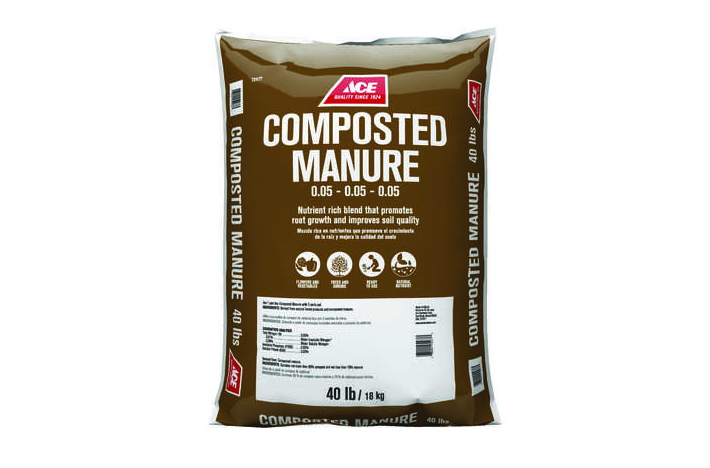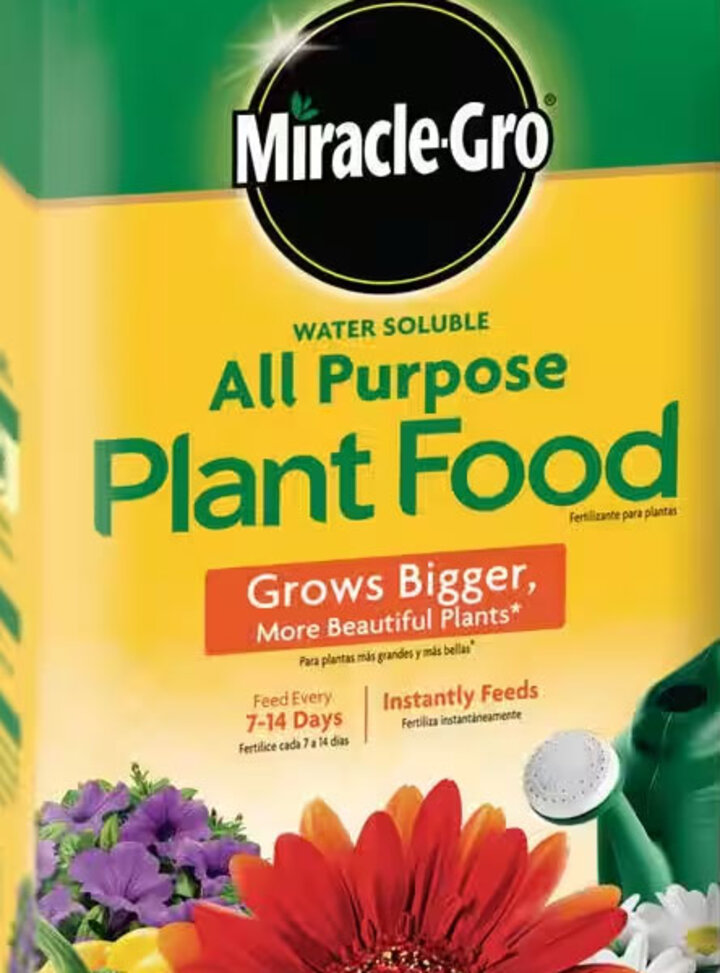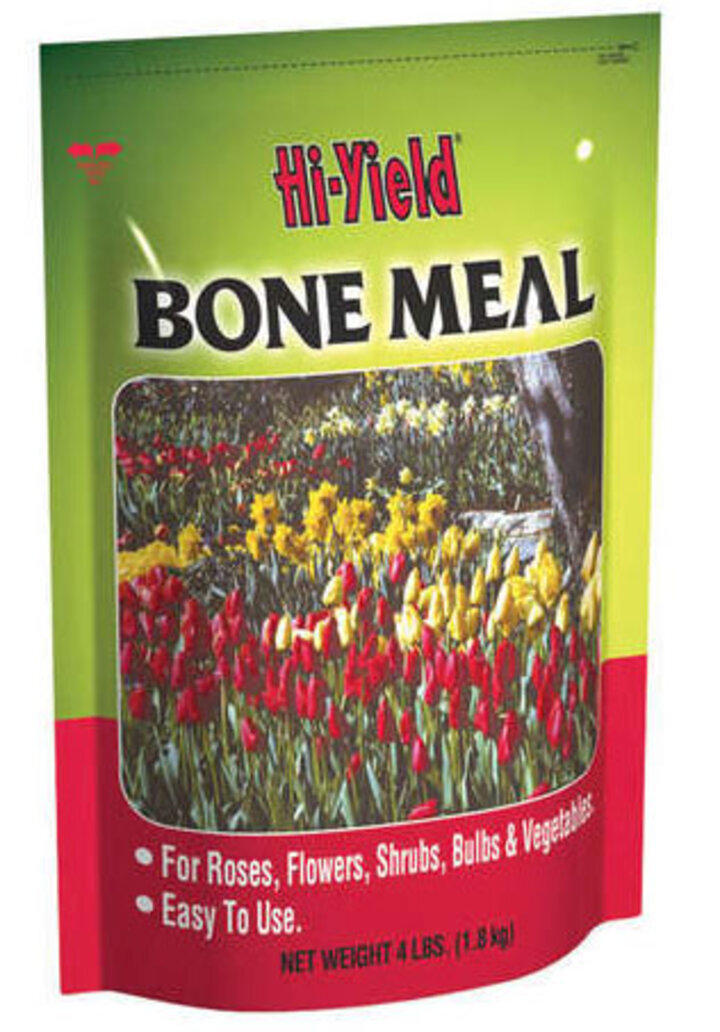Sarah Browning, Extension Educator

Animal manures are popular fertilizers. Although it has relatively low nutrient content, they provide many benefits for building soil quality. Image from Acehardware.com.
All plants - trees & shrubs, turf, ornamentals, fruits and vegetables – all require the same 17 nutrients to grow. Three of these - carbon, hydrogen and oxygen – plants get from air and water, but the remaining 14 nutrients are absorbed from the soil.
Plant nutrients are classified as either primary, secondary or micronutrients based on the quantity needed for plants to grow.
- Primary nutrients - nitrogen (N), phosphorus (P) and potassium (K).
- Secondary nutrients – sulfur (S), calcium (Ca), magnesium (Mg)
- Micronutrients – boron (B), copper (Cu), iron (Fe), manganese (Mn), molybdenum (Mo), nickel (Ni), zinc (Zn), chlorine (Cl)
Nebraska’s clay soils typically have good levels of phosphorus and potassium, along with adequate levels of all secondary and micronutrients, but areas with very sandy soil may have lower nutrient levels. A basic soil test is the best way to determine the existing nutrient levels in your soil. To find a soil lab near you, visit Go.unl.edu/ne-soillabs.
Ultimately, nitrogen is often the only nutrient limiting plant growth, but which is the best fertilizer to use – synthetic products or natural fertilizers?
Which Fertilizer to Choose
Fertilizer products are either inorganic or organic products, each with its own properties. Inorganic, synthetic products are not animal or plant-based and do not contain carbon; Miracle-Gro is one popular example.

Organic products, often thought of as “natural” products, do contain carbon and are derived from living organisms or materials. Examples of organic fertilizers include manure and bone or blood meal and fish emulsion, to name a few.
Inorganic vs. Organic
Inorganic fertilizers are usually fast release or water soluble products, but they can also be formulated to release slowly. Slow-release inorganic products are often pelletized or coated and broken down by soil microbes, heat, light or water.
Benefits of inorganic fertilizers include the ability to provide rapid delivery of nutrients to plants as they are needed, their ease of use and lower price tag. Calculation of precise application rates is easy due to the standardized nutrient content. However, potential for plant damage due to over application is higher with inorganic products, along with their potential to leach into surface or ground water when misapplied.

As soil microbes break down organic fertilizers, they secrete a sticky “gum” which binds together soil clay/silt/sand particles around tiny pieces of organic matter, ultimately creating larger soil aggregates. Formation of good soil aggregates improves tilth or workability, increases oxygen and water movement through the soil, and creates a better environment for plant root growth.
However, food safety concerns are a real issue with organic fertilizers. To be safe, allow at least 120 days from the application of animal-based fertilizer products until the first crop is harvested, if the edible portion of the crop is in direct contact with the soil. This is especially true if the crop is often eaten raw, like lettuce or carrots. If the edible portion of the crop is not in direct contact with the soil, allow at least 90 days from the last animal-based fertilizer application until harvest.
A best practice when using animal manure as fertilizer, is to apply it to vegetable gardens in fall after the last crops are harvested. This ensures several months for food safety pathogens to die off before the next crop is harvested.
Best of Both Worlds
Gardeners can choose to use either type of fertilizer, based on their preferences, budget, ease of use or product availability, and have a great response from their plants. But it’s also completely possible to use a combination of both organic and inorganic fertilizers, putting to work the best attributes of each.
Search Our Archive
Associated Video
Green & Growing Tip - Fertilizer
UNL Extension Educator Sarah Browning talks about properly fertilizing your garden plants. June 14, 2013.